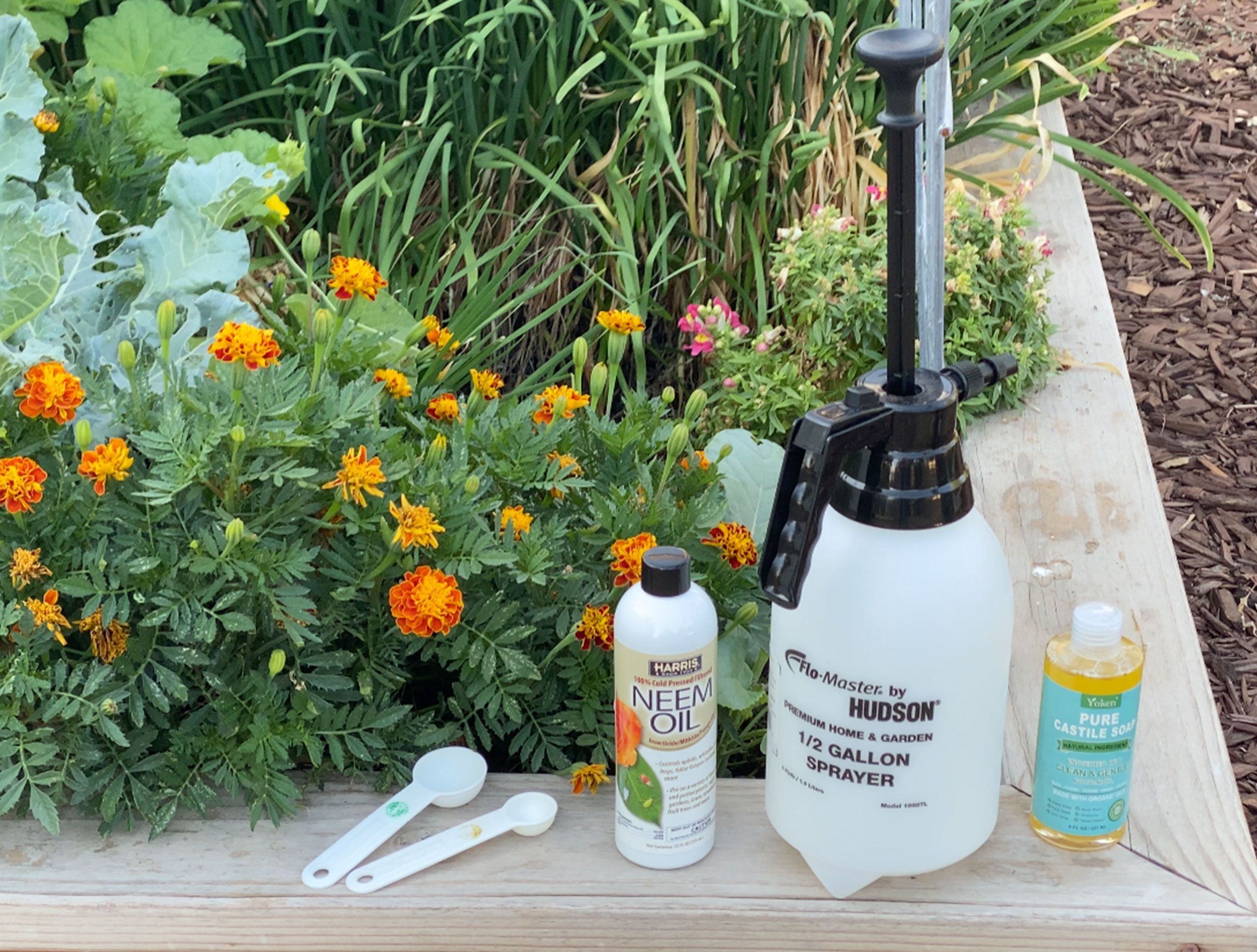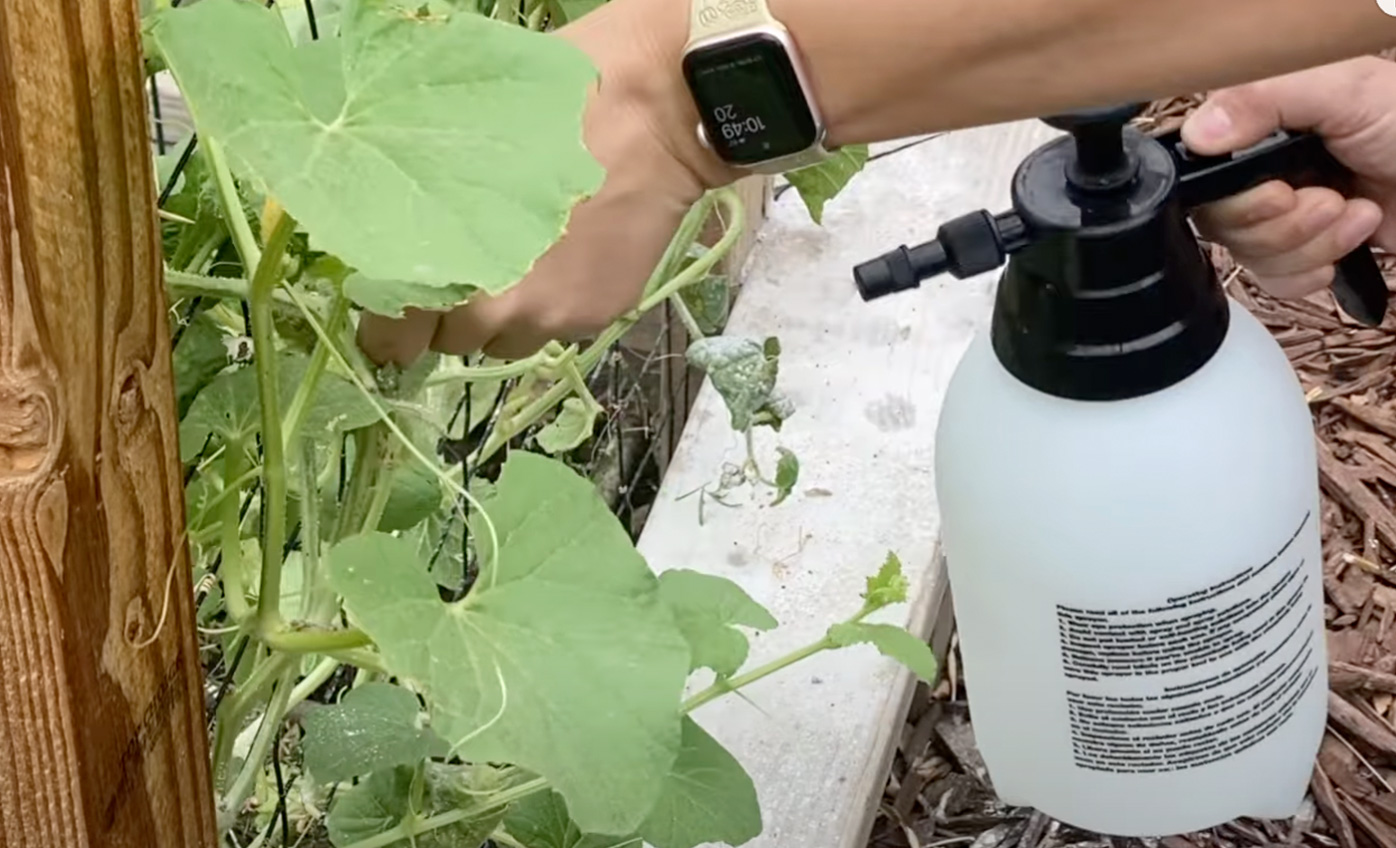How I Beat Aphids (For Good)
A short story from our raised beds—and the exact action plan I now follow any time aphids show up.
Once upon a Tuesday in the garden…
The cucumbers looked fine from the path—perky, even smug. But when I turned a leaf, the stems were crowded with tiny, soft-bodied squatters. A sticky shine—honeydew—glued ladybug shells to the trellis. Ants ran supply routes like little dockworkers. Aphids had arrived.
I did what I always do first: I breathed. Then I grabbed the hose, my measuring spoon, and our “Lucky Cat Plan.” The next week, the leaves were glossy, the new growth was clean, and the ants had moved out. Here’s the exact plan, step by step, with the why behind each move—so you can copy it, tweak it, and win your garden back.
What you need
- Strong hose sprayer (jet setting) or pump sprayer
- Pure castile soap or insecticidal soap (no degreasers, no fragrances)
- Cold-pressed neem oil (with azadirachtin listed)
- Measuring spoons + clean water
- Optional: sticky traps, diatomaceous earth for ant corridors, soft brush for leaf curls
The Lucky Cat Aphid Action Plan
Step 1 — Knockdown (Day 1, morning)
Blast colonies off with a firm water jet from below the leaves upward. Focus on tender tips and curled leaves. This alone removes a huge percentage and does not harm plants.
Step 2 — Soap contact spray (Day 1, evening)
Mix 1–2 tsp castile soap per quart of water (or follow label). Spray to full coverage on both sides of leaves. Soap dissolves the aphids’ protective coating—so coverage matters. Avoid full sun; spray at dusk.


Step 3 — Neem follow-up (48 hours later, evening)
Mix 1 tsp neem oil + a few drops of soap per quart of water (emulsifier), shake, and spray to coat. Neem disrupts feeding and reproduction on stragglers and eggs. Again—dusk, not full sun.
Step 4 — Ant ceasefire
Ants “farm” aphids for honeydew. Break ant highways with water, sticky barriers on stakes, or food-safe powders (like diatomaceous earth) around bed legs. No ants, fewer aphids.
Step 5 — Apply Yeast Fertilizer Recipe to base of Plants
Add 1 tbsp sugar and 1 tbsp active dry yeast to a 2 gallon water jug and fill completely with water. Let solution sit in a cool and dry place for 2-4 days, then apply to base of plants and water in immediately after. Can be applied up to 3 times during plant lifecycle. This will give plants a boost of nutrients to help fight off pests.
Step 6 — Keep the reinforcements
Protect lady beetles, lacewings & parasitic wasps: spray at dusk, target only affected plants, and skip broad-spectrum pesticides. Let the good guys finish the job you started.
Watch: How I Beat Aphids (For Good)
The exact blast → soap → neem rhythm I use, plus prevention tips.
Field notes (what to do in tricky cases)
- Leaf curls trapping aphids? Gently open with a soft brush, spray, then remove the worst curls.
- New growth keeps getting hit? Increase your frequency (not dose). Soap → neem rhythm at dusk.
- Heat wave? Skip midday spraying. Rise early to blast with water; use neem/soap at dusk only.
- Succulents or tender herbs? Patch test a leaf first; halve the soap rate if needed.
Prevent aphids from coming back
- Balanced watering: even moisture prevents lush, sappy growth aphids love. See our Drip Irrigation How-To.
- Mulch & airflow: 1–2″ organic mulch and gentle pruning deter pests and stress.
- Decoy & companion plants: nasturtiums (trap crop) and dill/fennel/alyssum (beneficials).
- Scout days: flip leaves every Sunday morning; early catch = easy win.
Prefer a refrigerator-friendly version?
Download the Aphid Control ChecklistQuick FAQ
Will soap or neem hurt bees?
Used at dusk and targeted to foliage (not open flowers), impact is minimal. Avoid spraying blooms and never apply in full sun when pollinators are active.
How fast will I see results?
The blast removes most adults immediately; soap finishes clusters that remain. Neem reduces re-infestation over 2–3 days by interrupting growth and feeding.
Can I just release ladybugs?
You can, but without removing honeydew and ant traffic they’ll fly off. Do the blast + soap first, manage ants, and plant nectar sources so beneficials stay.
Get seasonal pest plans & printables:
Join the Lucky Cat Garden Club
One Response